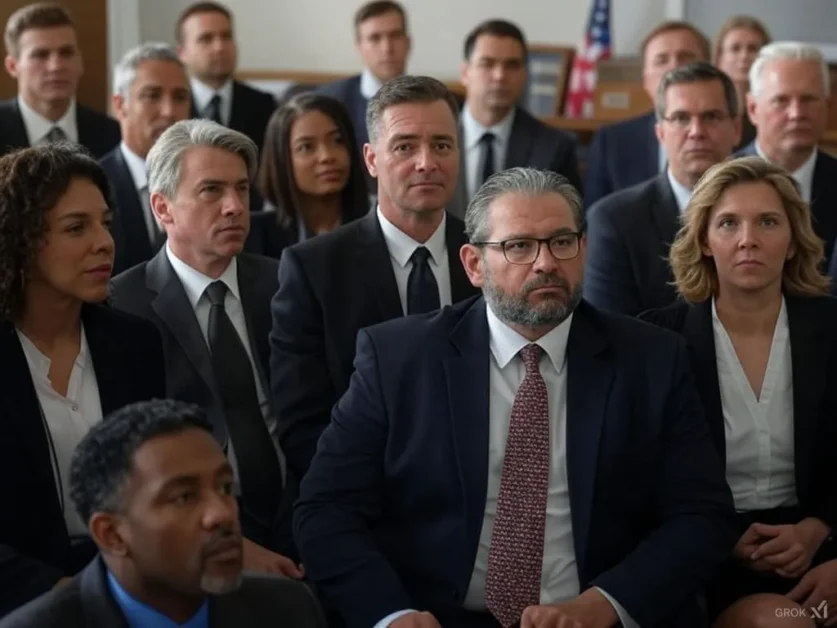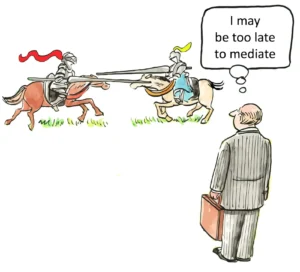How Does the Supreme Court Shape Legal Doctrine on Guns and Immigration?
The Supreme Court of the United States plays a pivotal role in shaping legal doctrine on contentious issues such as gun rights and immigration policy. Through its decisions, the Court establishes precedents that guide lower courts and influence legislation across the nation. In recent years, the Court has issued landmark rulings that have significantly impacted both Second Amendment jurisprudence and immigration law, reshaping the legal landscape in these areas.
In the realm of gun rights, the Supreme Court’s 2008 decision in District of Columbia v. Heller marked a watershed moment. The Court held that the Second Amendment protects an individual right to possess firearms for traditionally lawful purposes, including self-defense within the home. This ruling departed from previous interpretations that tied the right to bear arms to militia service. Justice Antonin Scalia, writing for the majority, argued that the operative clause of the Second Amendment codifies an individual right derived from English common law.
The Heller decision, however, did not settle all questions regarding the scope of Second Amendment protections. The Court acknowledged that the right to bear arms is not unlimited and that longstanding prohibitions on firearm possession by certain groups, such as felons and the mentally ill, remain presumptively lawful. This caveat has led to ongoing litigation and circuit splits as lower courts grapple with the boundaries of permissible gun regulation.
In 2022, the Supreme Court further expanded its Second Amendment jurisprudence with the decision in New York State Rifle & Pistol Association v. Bruen. This ruling struck down New York’s proper-cause requirement for obtaining a license to carry a concealed handgun in public. The Court established a new test for evaluating gun regulations, requiring that they be consistent with the nation’s historical tradition of firearm regulation. This decision has had far-reaching implications, prompting challenges to various gun control measures across the country.
The Bruen decision’s impact extends beyond concealed carry laws. Lower courts have applied its historical-tradition test to strike down a wide range of modern gun laws, including prohibitions on guns in mass transit, post offices, and possession by certain felons. This has created a state of legal uncertainty, with courts struggling to find historical analogues for contemporary gun regulations.
One area of particular controversy is the question of whether non-violent felons and certain categories of immigrants should retain Second Amendment rights. Some lower courts have ruled that non-violent felons who have completed their sentences and some undocumented immigrants with substantial connections to the community may have a constitutional right to possess firearms. These decisions have sparked debate and may eventually require Supreme Court intervention to resolve.
The Court’s approach to Second Amendment cases has not been uniformly expansive. In January 2025, the Supreme Court declined to hear challenges to Maryland’s handgun licensing regime and other gun-related cases. This selective engagement with Second Amendment issues suggests that the Court is carefully choosing which aspects of gun rights doctrine to address, leaving some questions to percolate in the lower courts.
On the immigration front, the Supreme Court’s decisions have similarly reshaped legal doctrine, often in ways that intersect with other areas of law, including constitutional rights and administrative law. The Court’s rulings on immigration have addressed issues ranging from executive power to enforce immigration laws to the rights of non-citizens within the United States.
A significant development in immigration law came with the Court’s decision to overturn the Chevron doctrine in June 2024. This longstanding principle of administrative law had required courts to defer to federal agencies’ reasonable interpretations of ambiguous statutes. The elimination of Chevron deference has profound implications for immigration policy, as it potentially limits the authority of agencies like the Department of Homeland Security and the Executive Office for Immigration Review to interpret and implement immigration laws.
The impact of this ruling on immigration cases is already being felt. Immigration attorneys and advocates are reassessing strategies for challenging agency decisions, as courts now have greater latitude to interpret immigration statutes without deferring to agency expertise. This shift could lead to more unpredictable outcomes in immigration cases and may ultimately require Congress to provide clearer statutory guidance on immigration matters.
Another area where the Supreme Court has shaped immigration doctrine is in its treatment of executive orders related to immigration enforcement. In early 2025, the Court was confronted with challenges to executive actions aimed at restricting birthright citizenship and altering immigration enforcement priorities. These cases highlight the ongoing tension between executive authority in immigration matters and constitutional protections.
The Court’s decisions on these executive actions have significant implications for the scope of presidential power in shaping immigration policy. By ruling on the validity of executive orders that seek to reinterpret longstanding understandings of citizenship and immigration law, the Court is effectively delineating the boundaries of executive discretion in this area.
The intersection of immigration law and constitutional rights has also been a focus of the Court’s jurisprudence. Cases involving the rights of non-citizens, particularly in the context of due process and equal protection, continue to shape the legal landscape. The Court’s rulings on these issues have far-reaching consequences for how immigration enforcement is conducted and the protections afforded to immigrants in various legal proceedings.
One particularly contentious area is the application of Second Amendment rights to non-citizens. Lower courts have grappled with whether and to what extent undocumented immigrants are included in “the people” protected by the Second Amendment. This question intersects with broader debates about the constitutional rights of non-citizens and the government’s power to regulate immigration.
The Supreme Court’s approach to these issues reflects a complex balancing act between national security concerns, the federal government’s plenary power over immigration, and individual rights. The Court’s decisions often have ripple effects that extend beyond immigration law, influencing debates on federalism, executive power, and the scope of constitutional protections.
As the Court continues to shape legal doctrine on guns and immigration, it must navigate a rapidly changing social and political landscape. Technological advancements, shifting demographics, and evolving public attitudes toward both gun ownership and immigration present new challenges for legal interpretation. The Court’s decisions in these areas not only resolve specific disputes but also set the stage for future legal battles and legislative responses.
The impact of the Court’s rulings on gun rights and immigration is not limited to the legal sphere. These decisions have profound societal implications, affecting public safety, community relations, and the very fabric of American society. As such, the Court’s role in shaping these doctrines is closely watched by policymakers, advocacy groups, and the general public.
In the realm of gun rights, the Court’s decisions have implications for state and local governments attempting to address gun violence. The historical-tradition test established in Bruen has made it more challenging for jurisdictions to implement certain types of gun control measures. This has led to a reevaluation of strategies for promoting public safety while respecting Second Amendment rights.
Similarly, the Court’s immigration rulings have significant consequences for federal, state, and local policies. Decisions on issues such as sanctuary cities, the rights of asylum seekers, and the scope of immigration enforcement authority shape the relationship between different levels of government and impact communities across the country.
The Court’s jurisprudence in these areas also reflects broader debates about constitutional interpretation and the role of the judiciary. The tension between originalist approaches to the Constitution and more flexible interpretations that account for changing societal conditions is particularly evident in cases involving gun rights and immigration.
As the Court continues to refine its doctrines on guns and immigration, it must also contend with the practical implications of its rulings. The implementation of new legal standards, such as the historical-tradition test for gun regulations, presents challenges for lower courts and lawmakers. Similarly, changes to immigration doctrine require adjustments in enforcement practices and policy formulation at various levels of government.
The Court’s decisions also have international ramifications, particularly in the realm of immigration law. Rulings on issues such as asylum policies and the treatment of non-citizens can affect diplomatic relations and the United States’ compliance with international agreements and norms.
Looking ahead, several key issues are likely to come before the Supreme Court in the near future. In the area of gun rights, challenges to assault weapon bans, restrictions on high-capacity magazines, and the constitutionality of “red flag” laws are working their way through the lower courts. These cases will provide opportunities for the Court to further clarify the scope of Second Amendment protections and the application of the historical-tradition test.
On the immigration front, potential cases may address the limits of executive authority in immigration enforcement, the rights of long-term undocumented residents, and the intersection of immigration law with other constitutional protections. The Court may also be called upon to address the implications of its Chevron decision on various aspects of immigration policy and enforcement.
As the Supreme Court navigates these complex issues, its decisions will continue to shape the legal landscape of gun rights and immigration in the United States. The Court’s rulings not only resolve specific disputes but also set the parameters for future legislative and policy debates. In doing so, the Court plays a crucial role in balancing individual rights, public safety concerns, and the federal government’s authority in these contentious areas of law.
The ongoing evolution of legal doctrine on guns and immigration underscores the dynamic nature of constitutional interpretation and the central role of the Supreme Court in American governance. As society continues to grapple with these challenging issues, the Court’s decisions will remain a focal point for legal scholars, policymakers, and the public at large, shaping the contours of American law and society for years to come.
Website citations used for this article:
- https://www.britannica.com/event/District-of-Columbia-v-Heller
- https://thereload.com/scotus-rejects-multiple-second-amendment-cases-relists-gun-ban-challenges/
- https://www.thetrace.org/2024/07/scotus-chevron-raimondo-atf-gun-laws/
- https://www.keranews.org/texas-news/2024-07-03/recent-supreme-court-ruling-could-have-big-impact-on-u-s-immigration-policy-asylum-cases
- https://midmichigannow.com/news/nation-world/courts-rule-non-violent-felons-some-illegal-migrants-can-own-guns-ninth-circuit-court-appeals-california-steven-duarte-prison-supreme-court-second-amendment-illinois-heriberto-carbajal-flores-crime-public-safety
- https://www.americanbar.org/news/abanews/aba-news-archives/2024/02/court-decisions-impact-gun-rights/
- https://www.aila.org/blog/potential-game-changer-cases-for-immigration-law-at-scotus
- https://www.nytimes.com/2025/01/06/us/supreme-court-disarming-felons.html


















